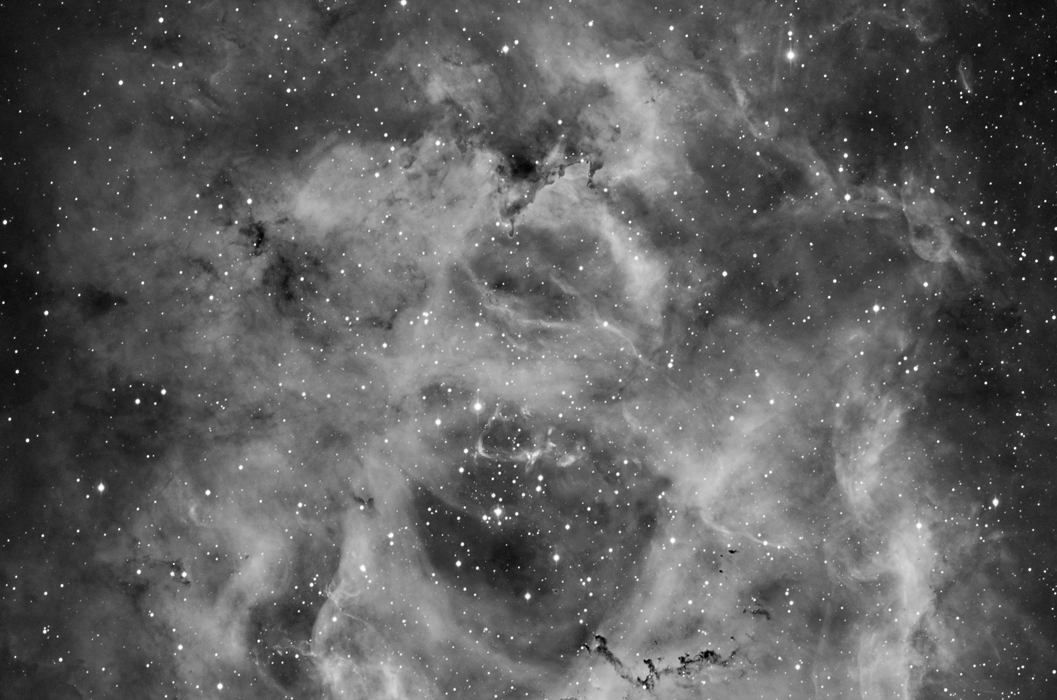The Rosette Nebula (NGC 2237-2239) in Hydrogen Alpha
Characteristics:
Magnitude: 4.8 (for NGC 2244 star cluster in center)
Size: 80' x 60'
Distance: 5500 light years
RA: 6h 31m
Dec: 4 degrees 57' 00"
Description:
The Rosette Nebula is a winter showpiece for astrophotographers, as
well as for visual observers at low power. This large emission
nebula is located in Monoceros and can be seen in dark locations with
the naked eye, especially if viewed through a UHC filter held up to the
sky. The nebula actually consists of several sections (NGC
2237-2239), with a central ladder like star formation known as NGC
2244. The central stars are young and newly-formed, and their
radiation is responsible for excitation of hydrogen atoms within the
nebula itself, which in turn emit light in the red.
Photographic Details:
Date: December 27, 2005.
Scope: Takahashi
FS-102 at f6 with TOA-130 focal reducer, on the G11 Losmandy
Mount.
Autoguider: SBIG STV with
e-finder.
Camera: Maxcam CM10.
Filter: Astronomiks
6nm Ha filter.
Exposures: 24
x 10' unbinned, total exposure 4
hours.
Conditions: Temperature 30 degrees F, average
transparency, average seeing, a slight breeze, clouds invaded early,
then cleared later for a good session.
Post-processing:
Subs were
debloomed using Ron Wodaski's Debloomer, and then calibrated and
aligned in Maxim. Combined using RC Sigma
Combine, followed
by DDP
in ImagesPlus (IP). Further processing in Photoshop CS (16
bit format).
Please
note: Graphics on this website may not be reproduced without
author permission.
Back to Hydrogen Alpha
Home

